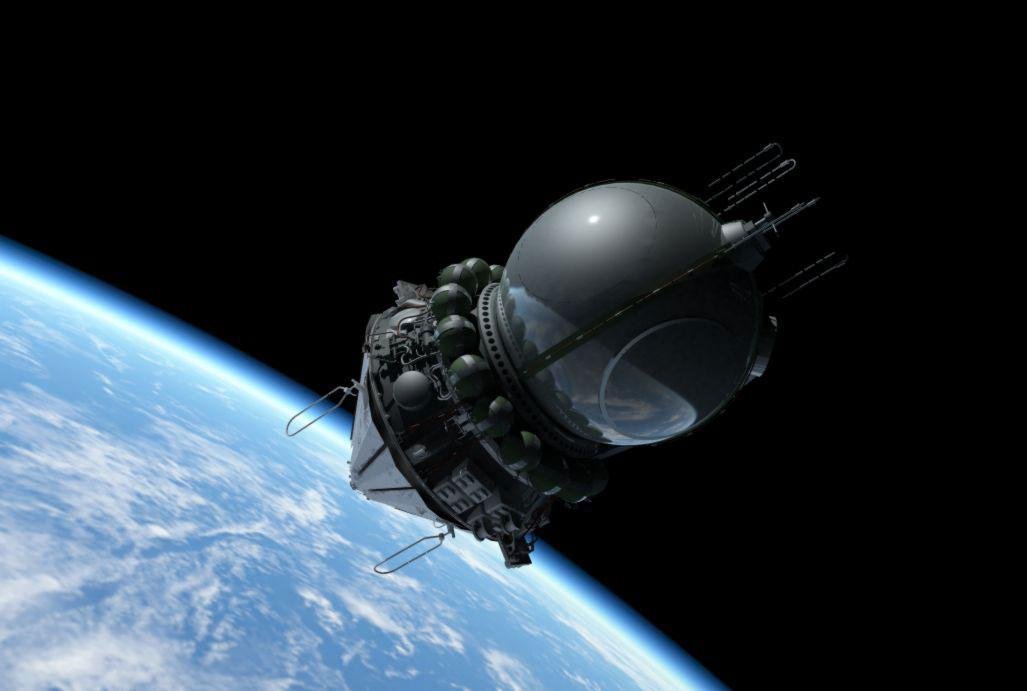every week, Technology World and #AstroMiniBR brings together five relevant and entertaining astronomical curiosities produced by collaborators. twitter profile To spread the knowledge of this science, which is the oldest!
#1: First manned space flight in history
62 years ago, on April 12, 1961, Yuri Gagarin made the first space flight in human history. ??
On board the Vostok 1, the cosmonaut circumnavigated the Earth in less than 2 hours. ??#AstroMiniBR pic.twitter.com/Jkmry669UZ
— Patricia Cruz, PhD (@patyccruz2) April 12, 2023
The first person in history to go into space was Soviet cosmonaut Yuri Gagarin, who took a 108-minute flight around the Earth on April 12, 1961.
The more than 4-ton Vostok 1 spacecraft carrying Gagarin into space launched at 9:07 a.m. Moscow time, orbited the Earth once at a maximum altitude of 301 kilometers, and landed in the Soviet Union at 10:55 a.m. Space flight immediately brought him worldwide fame, and he was awarded the Order of Lenin with the titles of Hero of the Soviet Union and Pilot-Cosmonaut of the Soviet Union, along with several monuments erected to him and streets renamed in his honor. Soviet Union.
Gagarin never went into space again, but took an active part in the training of other cosmonauts until his death, which occurred in the crash of a jet plane during a routine training flight, along with the death of another pilot.
#2: How big is our sun?
If you were to open the lid of the Sun, it would be possible to fit about 1.3 million Earths inside.
What about other planets? About 1000 Jupiters, 8.6 million Mars and 21,000 Uranus fit inside the Sun.#AstroMiniBR pic.twitter.com/qOYkAw16nJ
– Ana Carolina Owner (@astroposses) February 27, 2023
Our Sun, an ordinary 4.5 billion-year-old yellow star, appears to be a relatively small source of light and heat in the sky from Earth’s point of view. But the largest object in our Solar System is far from small: it’s about 1.4 million kilometers in diameter, and it’s gravity that keeps everything from the largest planets to the smallest bits of debris in orbit around it.
The Sun is so big that it takes 1.3 million planet Earths to fill its volume! If you want to do the math yourself, here are your numbers: The volume of the Sun is 1.412 x 1018 km3. And the volume of the Earth is 1.083 x 1012 km3. You get this value if you divide the volume of the sun by the volume of the Earth.
#3: How many moons do the largest planets in the Solar System have?
Jupiter and Saturn are the largest planets in the Solar System. No wonder they have almost 80% of the moons detected in our planetary system!
According to NASA’s latest calculation, Jupiter has 92 moons and Saturn 83!#AstroMiniBR
© NASA pic.twitter.com/RkfILZdpOo— Camila Esperanca (@astronomacamila) February 13, 2023
We already know that Jupiter and Saturn dominate the Solar System when it comes to planet size. What few know, however, are the features this reality entails in the Solar System.
As these planets formed and grew in the first million years of our system, these planets were able to capture smaller objects with their large gravitational fields and pull them into more or less stable orbits, depending on the initial conditions of both. This made both the owners of the largest number of moons: Jupiter has 92 moons and Saturn has 83.
This moon in the zoo features Jupiter, the largest in the Solar System, Ganymede, the ocean moon Europa, and the volcanic moon Io. Saturn, on the other hand, has two moons, Enceladus and Titan, which are subterranean oceans.
#4: TRAPPIST-1 system
TRAPPIST-1 is one of the most complex planetary systems we know of!
Above it, we found 7 planets, all of which are rocky, similar in size to our Earth and close to its star’s habitable zone* (=can support liquid water on its surface).#AstroMiniBR pic.twitter.com/zXrTtqKSUP— yanna martins franco (@martins_yanna) February 1, 2023
The star hosting the system TRAPPIST-1 was first discovered in 1999. At that time, the ultra-cold dwarf star was named heavy 2MASS J23062928-0502285 and was detected by Two Micron All-Sky Research (2 MASS).
Located about 39 light-years from Earth in the constellation Aquarius, this star was the subject of an important discovery in 2016: scientists have announced that they have found three planets around this star. Transiting Planets and Minor Planets Small Telescope (TRAPPIST) in Chile. In honor of this telescope, scientists began to refer to the star as TRAPPIST-1.
In fact, the TRAPPIST-1 system has the largest number of Earth-size planets ever found and the largest number of Earths with perfect water conditions (all orbiting much closer to the Sun than the planet Mercury). After the Solar System, it is one of the most studied star systems up to that time.
#5: A cosmic symphony!
Ending exoplanet exploration over the years. With each new discovery, the planet is marked in the sky.
The great conductors who led the symphony were the magnificent Kepler and TESS space telescopes.#AstroMiniBR pic.twitter.com/KHWhQWJ8Io
– Ana Carolina Owner (@astroposses) February 1, 2023
In March 2022, the number of known exoplanets exceeded 5,000. The animation you see above is a voiceover that accompanies the discovery of exoplanets over time, allowing the perception of how the rate of discovery is processed by converting data into sounds.
As each exoplanet is discovered, a circle appears in its position in the sky, the size of which indicates the relative size of the planet’s orbit, and its color indicates which planet detection method was used to discover it. Music is created by playing a note for each newly discovered world, and each pitch of the note represents the planet’s relative orbital period. Planets orbiting their stars for longer periods of time are heard as lower notes, while planets orbiting faster are heard as higher notes.
Source: Tec Mundo
I’m Blaine Morgan, an experienced journalist and writer with over 8 years of experience in the tech industry. My expertise lies in writing about technology news and trends, covering everything from cutting-edge gadgets to emerging software developments. I’ve written for several leading publications including Gadget Onus where I am an author.













